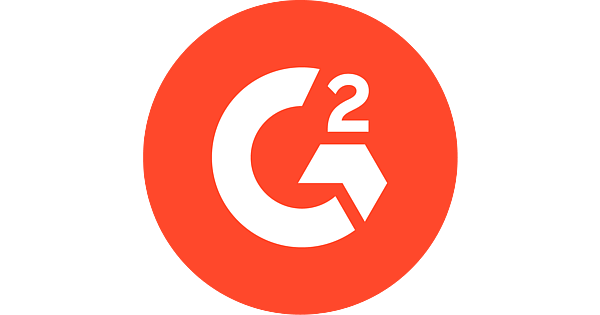Blog
Cloud Security 101: How To Secure Cloud Data
- 8 Cloud Security Tips to Secure Your Cloud Data
- Use Stronger Passwords
- Embrace Multi-factor Authentication
- Check and Update Privacy Settings
- Audit Shared Folders
- Choose Reliable Anti-Malware and Antivirus Offerings
- Go for a Cloud Provider with Strong Security Features
- Educate Your Employees
- Backup Data Regularly
- Conclusion
Cloud computing technology has become ubiquitous in today's digital world, enabling users to access storage, data backups, file sharing, social media, software, servers, streaming, conferencing, and more. A 2021 report shows that 33% of companies have over 50% of their workloads in the cloud, emphasizing the need for fundamental knowledge of cloud security.
When on the cloud, your data resides primarily on public servers, meaning that it can be prone to attacks. According to McAfee, one out of four companies using cloud services experiences data theft or a breach of some kind. And since almost 97% of companies worldwide are using cloud services in one way or another, it is important now more than ever to learn how to maintain the highest levels of cloud security from a user's standpoint.
8 Cloud Security Tips to Secure Your Cloud Data
Two-factor authorization and strong passwords are the two most common ways to secure your data on the cloud. However, there are many other cloud security measures that organizations can put in place to protect sensitive data.
Use Stronger Passwords
Choosing long and unique passwords with special characters, upper and lowercase letters, and using ‘pass phrases’ wherever possible will create a strong password. You can also use a password manager to develop unique passwords and safely store them. Don't forget to update your passwords regularly and don't use the same password across platforms.
See more about Ontario's password security standards
Embrace Multi-factor Authentication
Using multi-factor authentication (MFA) enables you to restrict unwelcomed visitors (mostly bad actors) from gaining access to your cloud services, even if they get their hands on your password. MFA adds another level to security by sending you a security code on your mobile device or email when someone tries to log in. There are even solutions that allow you to add biometric security for MFA.
Check and Update Privacy Settings
Configuring privacy settings should always be the first step after signing up for a cloud service. It is strongly recommended to evaluate and change default privacy settings as needed. Also, users should ensure that they don’t share their private information via the apps that connect to cloud services. Recheck the privacy or security settings and reconfigure after regular intervals to keep your information safe.
Take Packetlabs’ Cybersecurity Maturity Assessment to evaluate your business's cybersecurity health, including that of your cloud services.
Audit Shared Folders
Cloud services are a good platform for storing, sharing, and working on files that contain sensitive information, but they may leave your data open to unauthorized access. Users are encouraged to add passwords and expiry dates to their shared files.
You can also run a regular audit of all the active shares of your files. Then, choose to unshare shares (files) that no longer need to stay shared or available.
Choose Reliable Anti-Malware and Antivirus Offerings
It is important to have a strong antivirus program on all cloud-using devices. Solutions for malware protection also block suspicious URLs and downloads, keeping your cloud accounts safe.
See more about protecting your business from malware
Go for a Cloud Provider with Strong Security Features
Choose cloud providers that utilize encryption and additional cloud security features to keep your data safe. While opting for a cloud service, evaluate the level of control that you get over your data.
Educate Your Employees
Users are often the weakest link in terms of cloud security. As a result, businesses should educate their staff regarding cloud security standards. Covering topics such as the risks of storing data in the cloud, the importance of having a strong password, the attack tactics that the threat actors use will help show your employees why cloud security is so important.
Backup Data Regularly
Data backups can pertain to both the cloud service provider and the organizations that use the cloud service. The cloud service provider should create data backups and store them across multiple data centers. This ensures easy data recovery when one of the servers goes offline. Companies, on the other hand, should also back up cloud-based files and choose a specific timeline to update them regularly.
Conclusion
It is safe to assume that your data in the cloud is not 100% secure. It's best to take proactive measures to ensure the highest levels of cloud security. If however, you suspect your cloud account has been hacked, change your password and notify the service provider right away.
Packetlabs can help your organization uncover vulnerabilities residing in your IT and network systems and provide a tailored approach to each environment, creating a safer digital space for you and your business.
Featured Posts

April 18 - Blog
9 AI Enabled Cybersecurity Tools in 2025
Discover 5 AI-powered cybersecurity tools that support red teaming, threat detection, and vulnerability discovery efforts.

April 10 - Blog
Tactics for Jailbreaking LLMs
LLM security risks grow with advanced jailbreak techniques like Many-shot, Deceptive Delight, and PAIR. Discover how attackers bypass AI safety measures and how to mitigate these emerging threats.

February 04 - Blog
Blackwood APT Uses AiTM Attacks to Target Software Updates
Blackwood APT uses AiTM attacks that are set to target software updates. Is your organization prepared? Learn more in today's blog.

- Toronto | HQ
- 401 Bay Street, Suite 1600
- Toronto, Ontario, Canada
- M5H 2Y4
- San Francisco | HQ
- 580 California Street, 12th floor
- San Francisco, CA, USA
- 94104
© 2024 Packetlabs. All rights reserved.






